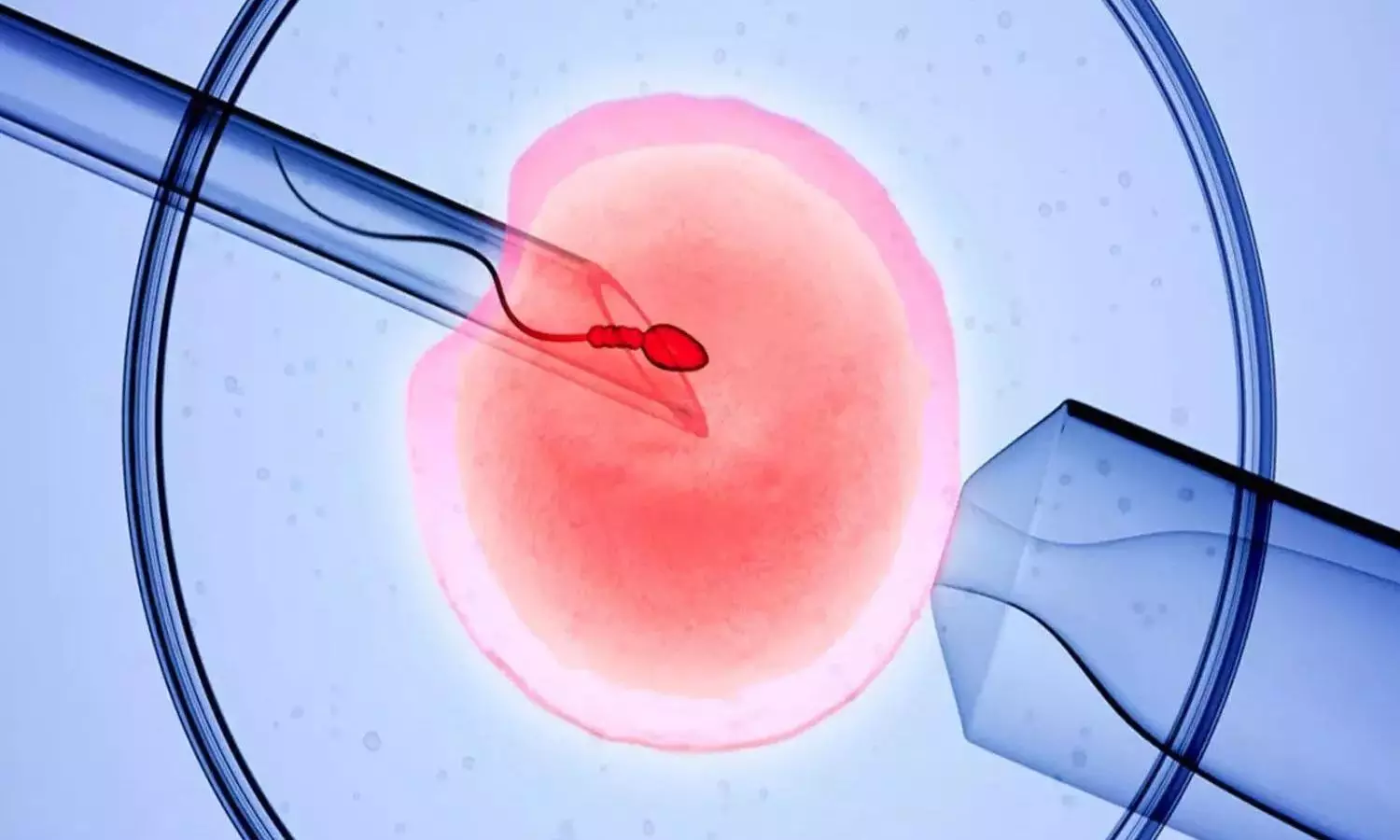Intracytoplasmic sperm injection+ cryopreserved embryos associated with risk of imprinting disorders: Study

Infertility is defined as the failure to establish a
pregnancy after 12 months of regular unprotected sexual intercourse. As of
2020, it is estimated that infertility affects approximately 186 million people
and that >10 million children have been conceived by assisted reproductive
technology (ART) therapy worldwide, overcoming infertility causes. Referring to
the handling of sperm and eggs outside of the body, a complete ART therapy
cycle typically involves ovarian stimulation, gamete collection, in vitro
fertilization (IVF), embryo culture, and embryo transfer (ET). Over time,
procedures have developed to effectively address diverse infertility-related
conditions and enhance reproductive success through the development of methods
for cryopreservation of gametes and embryos since the 1980s, as well as the
optimization of insemination methods such as intracytoplasmic sperm injection
(ICSI) introduced in the 1990s. Undoubtedly of huge benefit to involuntarily
childless couples, the use of ART therapy also brings concern, not least as
specific procedures have been implemented rapidly, and the long-term follow-up
of cohorts conceived using these procedures is still limited.
In humans, a subset of genes are expressed preferentially
from either the maternal or paternal allele, a phenomenon known as genetic
imprinting regulated by imprinting centers, which is characterized by a
germline-specific differentially methylated region. Current studies demonstrate
that intergenerational inheritance of genetic imprints is a complicated process
in which the germline genetic imprint is first erased and then reestablished
during gametogenesis.
After fertilization, the imprint inherited from gametes is
maintained during early embryogenesis. Disruption of monoallelic expression of
imprinted genes, e.g., through abnormal erasure processes in primordial germ
cells, failure to reestablish imprints in gametes, or postfertilization
maintenance, can lead to the development of imprinting disorders (IDs).
In vitro manipulation of both gametes and embryos during
epigenome remodeling, when the epigenetic machinery is highly active as well as
potentially more vulnerable, has raised concern about the possibility of ART
therapy as a potential source of genomic IDs. Previous studies have suggested a
positive association between ART therapy use and Beckwith-Wiedemann syndrome
(BWS), Prader-Willi syndrome (PWS), and Silver-Russell syndrome (SRS). In some
studies, disruption of genomic imprints related to aberrant methylation
patterns has been found in patients conceived with ART therapy. However, only a
few events have been usually captured in the studies, and knowledge about the
contribution of specific ART therapy procedures to this association is limited.
Furthermore, considering the potential role of parental infertility and related
background factors on the expression of imprinted genes, it is necessary to
evaluate to what extent the observed associations could be explained by
infertility or by ART therapy itself.
In this nationwide register-based study, authors aimed to
quantify the occurrence of four specific IDs in Sweden in relation to parental
infertility and the use of ART therapy; as well as examine whether a potential
observed association between ART therapy and IDs could be driven by the ART
therapy procedures or by underlying parental risk factors related to
infertility; as well as assess the safety of specific ART therapy procedures
with respect to IDs.
The International Classification of Diseases version 10 was
used to identify three distinct imprinting disorder groups: Beckwith-Wiedemann
syndrome (BWS), Prader-Willi syndrome (PWS), and Silver-Russell syndrome (SRS),
as well as central precocious puberty. The Cox model combined with inverse
probability treatment weights was used to estimate the weighted hazard ratio
(wHR) with a 95% confidence interval (CI), accounting for multiple confounders.
A total of 1,044 children were diagnosed with the disorders
of interest, and 52 of them were conceived using ART therapy. The overall risk
of being diagnosed with any of the studied imprinting disorders was elevated in
children conceived using ART therapy compared with all other children (HR,
1.84; 95% CI, 1.38–2.45). After adjusting for parental background factors, the
association was partially attenuated (wHR, 1.50; 95% CI, 0.97–2.32), but
remained in the weighted comparison restricted to children of couples with
known infertility (wHR, 1.52; 95% CI, 1.05–2.21).
For the specific diagnoses of PWS/SRS, and BWS compared with
children of couples with known infertility, children conceived with ART therapy
showed a small excess risk, which could not be distinguished from the null
(wHR, 1.56; 95% CI, 0.93–2.62 and 1.80; 95% CI, 0.99–3.28, respectively).
Further subgroup analysis showed that the combined use of
intracytoplasmic sperm injection and cryopreserved embryos was associated with
a higher risk of both PWS/SRS (wHR, 4.60; 95% CI, 1.72–12.28) and BWS (wHR,
6.69; 95% CI, 2.09–21.45).
The number of central precocious puberty cases in children
conceived using ART therapy was too small (N ¼ 3) to make any meaningful
inference.
In this population-based study with nationwide coverage,
children conceived with ART therapy had a small excess risk of PWS, SRS, and
BWS, which could not be distinguished from the null. However, the use of ICSI
in combination with FET appeared to be associated with elevated risks of PWS/
SRS, and BWS. The number of cases of CPP was too small to make any inference
with respect to parental infertility and the use of ART therapy. Beyond the interaction
between genetics and epigenetics, environmental factors impacting gametes as
well as early embryos contribute to the etiology of IDs
This study demonstrated that children conceived using ICSI
combined with cryopreserved embryos are at small elevated risks of BWS, PWS,
and SRS, independent of parental background factors including infertility
Source: Mujin Ye, M.D.,a,b Arturo Reyes Palomares, Ph.D.,a
Erik Iwarsson, M.D., Ph.D; Fertil Steril® Vol. 122, No. 4, October 2024
0015-0282
https://doi.org/10.1016/j.fertnstert.2024.05.168
Children conceived using intracytoplasmic sperm injection combined with cryopreserved embryos at elevated risks of imprinting disorders: Study



